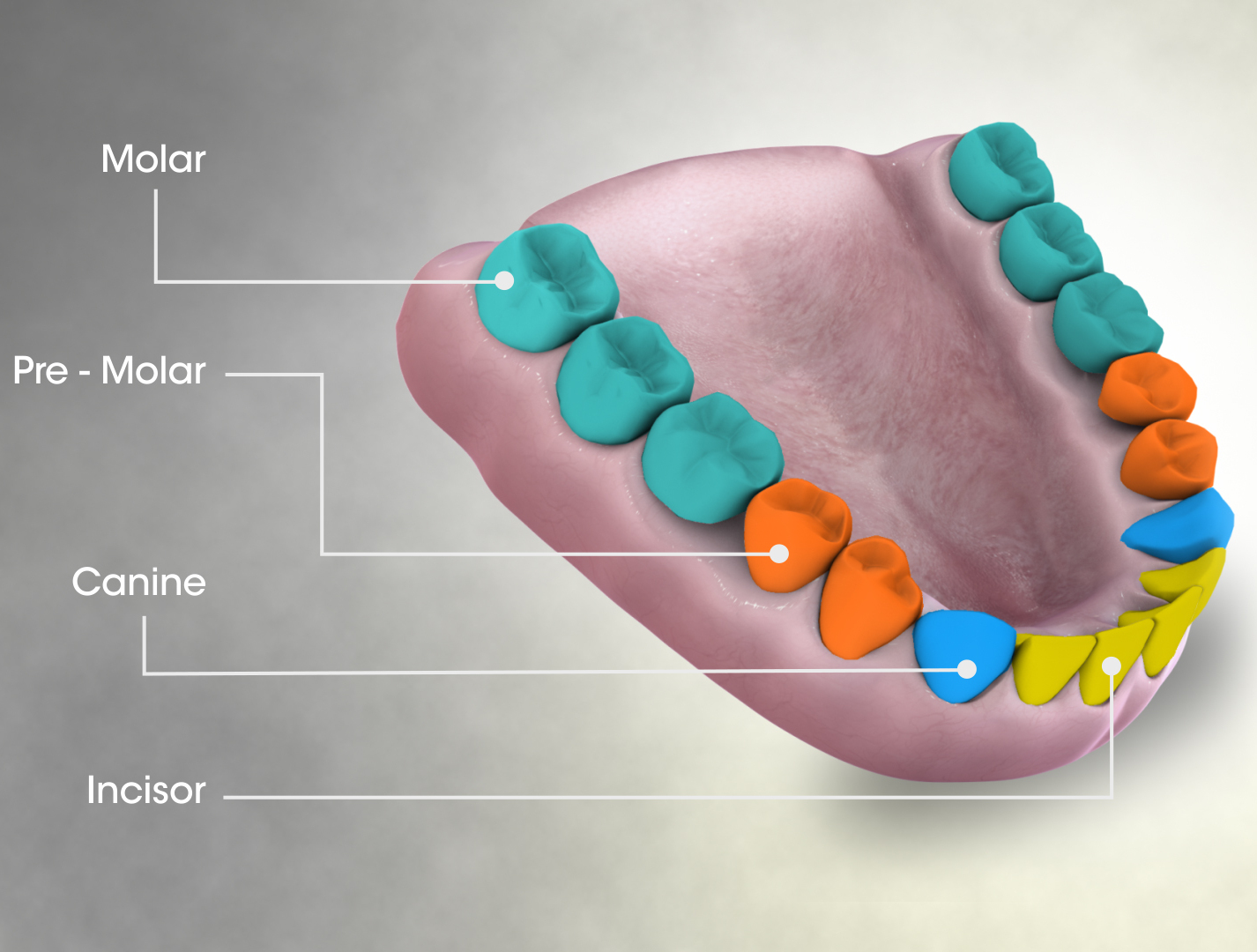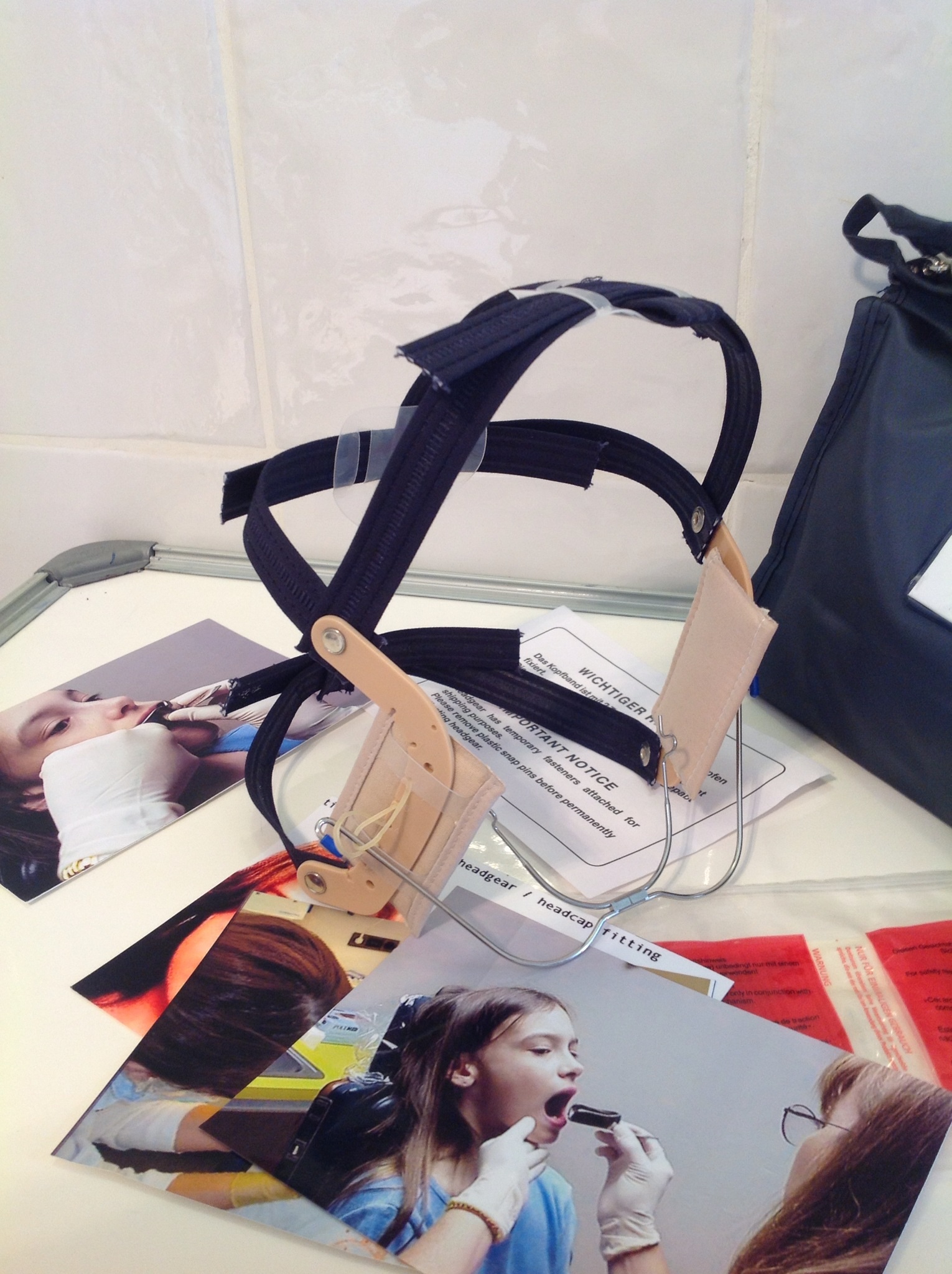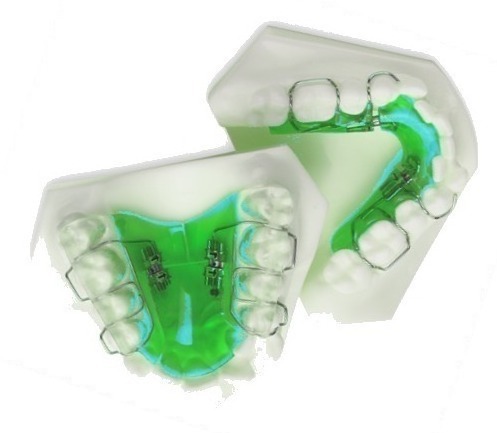|
ACCO Appliance
ACCO or Acrylic Cervical Occipital Anchorage is an appliance in field of orthodontics which is used for distalization of maxillary molars. This appliance is a removable type of appliance which was developed by Herbert I. Margolis. This appliance is intended to be worn 24 hours a day except during meals. It is one of the few removable appliances made for distalization of molars and thus require patient compliance for the treatment to be successful. Components * Palatal Acrylic with bite plate * Modified Adams clasps on first premolars * Labial bow across incisors * Finger springs against first molars In this appliance, the fingers springs are the main component which act against the 1st molars to move them distally. These springs apply about 100 to 125g of force to the molars after they are activated posteriorly. The original appliance developed by Margolis included helices next to the laterals and canines for a straight pull or Northwest headgear tubes to be inserted. This app ... [...More Info...] [...Related Items...] OR: [Wikipedia] [Google] [Baidu] |
Orthodontics
Orthodontics is a dentistry specialty that addresses the diagnosis, prevention, management, and correction of mal-positioned teeth and jaws, and misaligned bite patterns. It may also address the modification of facial growth, known as dentofacial orthopedics. Abnormal alignment of the teeth and jaws is very common. Nearly 50% of the developed world's population, according to the American Association of Orthodontics, has malocclusions severe enough to benefit from orthodontic treatment: although this figure decreases to less than 10% according to the same AAO statement when referring to medically necessary orthodontics. However, conclusive scientific evidence for the health benefits of orthodontic treatment is lacking, although patients with completed orthodontic treatment have reported a higher quality of life than that of untreated patients undergoing orthodontic treatment. Treatment may require several months to a few years, and entails using dental braces and other appliances ... [...More Info...] [...Related Items...] OR: [Wikipedia] [Google] [Baidu] |
Molar Distalization
Molar distalization is a process in the field of Orthodontics Orthodontics is a dentistry specialty that addresses the diagnosis, prevention, management, and correction of mal-positioned teeth and jaws, and misaligned bite patterns. It may also address the modification of facial growth, known as dentofacial ... which is used to move molar teeth, especially permanent first molars, distally (backwards) in an arch. This procedure is often used in treatment of patients who have Class 2 malocclusion. The cause is often the result of loss of E space in an arch due to early loss of primary molar teeth and mesial (forward) migration of the molar teeth. Sometimes molars are distalized to make space for other impacted teeth, such as premolars or canines, in the mouth. Distalization in the maxillary arch is easier than the mandibular arch because maxillary bone has more trabecular bone than the mandible, which has higher percentage of cortical bone. One of the most popular devices that is ... [...More Info...] [...Related Items...] OR: [Wikipedia] [Google] [Baidu] |
Maxillary Molar
The molars or molar teeth are large, flat teeth at the back of the mouth. They are more developed in mammals. They are used primarily to grind food during chewing. The name ''molar'' derives from Latin, ''molaris dens'', meaning "millstone tooth", from ''mola'', millstone and ''dens'', tooth. Molars show a great deal of diversity in size and shape across mammal groups. The third molar of humans is sometimes vestigial. Human anatomy In humans, the molar teeth have either four or five cusps. Adult humans have 12 molars, in four groups of three at the back of the mouth. The third, rearmost molar in each group is called a wisdom tooth. It is the last tooth to appear, breaking through the front of the gum at about the age of 20, although this varies from individual to individual. Race can also affect the age at which this occurs, with statistical variations between groups. In some cases, it may not even erupt at all. The human mouth contains upper (maxillary) and lower (mandi ... [...More Info...] [...Related Items...] OR: [Wikipedia] [Google] [Baidu] |
Herbert I (died in 1036)
{{hndis, Herbert 01 ...
Herbert I may refer to: * Herbert I, Count of Vermandois (c. 848/850 – 907) * Herbert I, Count of Maine Herbert I (died 13 April 1035), called Wakedog (from French ''Eveille-chien'', Latinized as ''Evigilans Canis''), was the count of Maine from 1017 until his death. He had a turbulent career with an early victory that may have contributed to his la ... [...More Info...] [...Related Items...] OR: [Wikipedia] [Google] [Baidu] |
First Premolar
The premolars, also called premolar teeth, or bicuspids, are transitional teeth located between the canine and molar teeth. In humans, there are two premolars per quadrant in the permanent set of teeth, making eight premolars total in the mouth. They have at least two cusps. Premolars can be considered transitional teeth during chewing, or mastication. They have properties of both the canines, that lie anterior and molars that lie posterior, and so food can be transferred from the canines to the premolars and finally to the molars for grinding, instead of directly from the canines to the molars. Human anatomy The premolars in humans are the maxillary first premolar, maxillary second premolar, mandibular first premolar, and the mandibular second premolar. Premolar teeth by definition are permanent teeth distal to the canines, preceded by deciduous molars. Morphology There is always one large buccal cusp, especially so in the mandibular first premolar. The lower second prem ... [...More Info...] [...Related Items...] OR: [Wikipedia] [Google] [Baidu] |
Incisor
Incisors (from Latin ''incidere'', "to cut") are the front teeth present in most mammals. They are located in the premaxilla above and on the mandible below. Humans have a total of eight (two on each side, top and bottom). Opossums have 18, whereas armadillos have none. Structure Adult humans normally have eight incisors, two of each type. The types of incisor are: * maxillary central incisor (upper jaw, closest to the center of the lips) * maxillary lateral incisor (upper jaw, beside the maxillary central incisor) * mandibular central incisor (lower jaw, closest to the center of the lips) * mandibular lateral incisor (lower jaw, beside the mandibular central incisor) Children with a full set of deciduous teeth (primary teeth) also have eight incisors, named the same way as in permanent teeth. Young children may have from zero to eight incisors depending on the stage of their tooth eruption and tooth development. Typically, the mandibular central incisors erupt first, ... [...More Info...] [...Related Items...] OR: [Wikipedia] [Google] [Baidu] |
Orthodontic Headgear
Orthodontic headgear is a type of orthodontic appliance typically attached to the patient's head with a strap or number of straps around the patient’s head or neck. From this, a force is transferred to the mouth/jaw(s) of the subject. Headgear is used to correct bite and support proper jaw alignment and growth. It is typically recommended for children whose jaw bones are still growing. Unlike braces, headgear is worn partially outside of the mouth. An orthodontist may recommend headgear for a patient if their bite is more severely out of alignment. The device typically transfers the force to the teeth via a facebow or J hooks to the patient's dental braces or a palatal expander that aids in correcting more severe bite problems or is used in retention of the teeth and jaws of the patient. Need for treatment and concurrent corrections Headgear is most commonly used to correction anteroposterior discrepancies. The headgear attaches to the braces via metal hooks or a facebow. ... [...More Info...] [...Related Items...] OR: [Wikipedia] [Google] [Baidu] |
List Of Orthodontic Functional Appliances
This is a comprehensive list of functional appliances that are used in the field of orthodontics. The functional appliances can be divided into fixed and removable. The fixed functional appliances have to be bonded to the teeth by an orthodontist. A removable functional appliance does not need to be bonded on the teeth and can be removed by the patient. A removable appliance is usually used by patients who have high degree of compliance with their orthodontic treatment. Fixed appliances are able to produce very accurate movement in the teeth Both fixed and removable functional appliances can be used to correct a malocclusion in three planes: Anterior-Posterior, Vertical and Transverse. In the Anterior-Posterior dimension, appliances such as Class II and Class III are used. Appliances used in transverse dimension are utilized to expand either the maxillary or the mandibular arch. Appliances used in the vertical dimension are used to correct open or deep bite. History It is impo ... [...More Info...] [...Related Items...] OR: [Wikipedia] [Google] [Baidu] |
List Of Palatal Expanders
This article lists different types of expanders that are available for the process of palatal expansion in the field of orthodontics. There can be many types of transverse dimension appliances. These appliances can be used to achieve expansion in the maxillary arch; there are devices for mandibular expansion or lower expansion too. In past many years, different types of appliances have been made. These types are: tissue-borne, tooth-borne, slow maxillary expansion, rapid maxillary expansion, and bone-anchored. Types of expanders Tissue-borne expander Tissue supported expanders allow the forces to be applied directly to the tissues of palatal mucosa instead of teeth. The most common type of tissue-borne expander is known as the Haas Appliance. This appliance was popularized by Andrew Haas in 1961. This appliance involves bands placed on maxillary first premolar and first molars on each side. Haas appliance has palatal acrylic that is in contact with palatal mucosa. Inside the ... [...More Info...] [...Related Items...] OR: [Wikipedia] [Google] [Baidu] |
Pendulum Appliance
Pendulum is an orthodontic Orthodontics is a dentistry specialty that addresses the diagnosis, prevention, management, and correction of mal-positioned teeth and jaws, and misaligned bite patterns. It may also address the modification of facial growth, known as dentofacial ... appliance, developed by James J. Hilgers in 1992, that use forces to distalize the upper 1st molars to create space for eruption of impacted teeth or allowing correction of Class 2 malocclusion. This appliance is a fixed type of distalizing appliance that does not depend on the compliance of each patient to work. Hilgers published an article in '' Journal of Clinical Orthodontics'' in 1992 describing the appliance. Management The initial design of the appliance used the occlusal rests which were bonded to the premolars for retention. However, premolars can also be banded for the retention purposes. Pre-activation of the appliance mandates bending of the TMA springs 90 degrees or parallel to the midline of ... [...More Info...] [...Related Items...] OR: [Wikipedia] [Google] [Baidu] |



